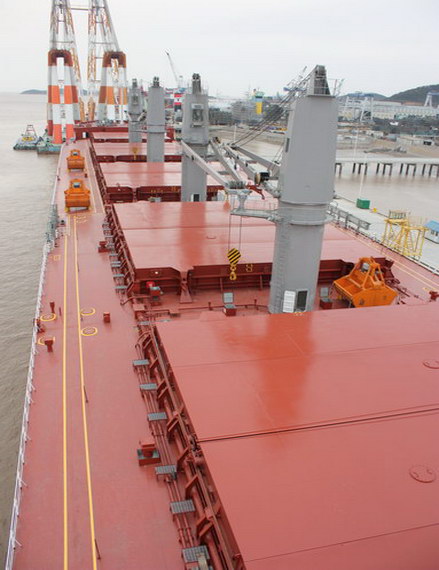
AVENTICUM
IMO No.: 9493963
Schiffstyp / Ship's type: Motor / Massengutfrachter / Bulk Carrier (Handymax)
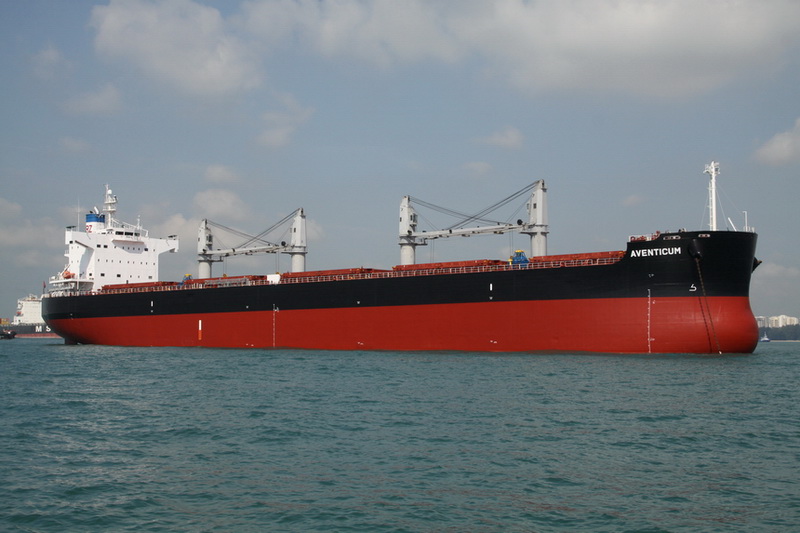
![]()
Bau / Construction
| Bauwerft / Shipyard: | Tsuneishi Group (Zhoushan) Shipbuilding Inc., Zhoushan, Daishan County ZJ, P. R. of China | ||
| Bau Nr. / Hull / Yard No: | SS-046 | Baujahr / Year of built: | 2010 |
| Kiellegung / Keel laying: | 30.11.2009 | Stapellauf / Launching: | 18.01.2010 |
| Ablieferung / Delivery: | 31.03.2010 | ||
![]()
Reeder - Manager / Shipping company - Manager
| Eigner / Registered owner: | Bulk Shipping (Switzerland) AG Zug | ||
| Reeder / Shipping Company (Manager): | Reederei Zürich AG Zürich | ||
| Tech. Management / Technical Mgmt: | Reederei Zürich AG Zürich | ||
| Management von / from: | 11.06.1981 | Management bis / until: | 00.00.0000 |
| Registerhafen / Homeport: | Basel | Flagge / flag: | Switzerland (CHE) |
| Rufzeichen / Call sign: | HBLI | Register-Nr. / Official No: | 200 |
| Registrier Datum / Date: | 31.03.2010 | Register Streichung / Deletion: | 00.00.0000 |
| Verbleib / Fate: | In Fahrt / In service | ||
![]()
Vermessung / Tonnage
| BRZ / GT: | 32'297 | Länge / Length: | 189.99 | Meter | ||
| NRZ / NT: | 19'458 | Breite / Breadth: | 32.26 | Meter | Passenger: | - |
| DWT: | 58'087 | Tiefgang / Draft: | 12.826 | Meter | Crew: | 22 |
| Lightship tons: | 9'727 | Tiefe / Depth: | 18.00 | Meter | ||
| Ladegeschirr / Cargo gear: | 4 Kräne / Cranes 30-ton (metric) SWL (Safe Working Load) | |||||
![]()
Maschine / Machinery
| Maschinen-Typ / Engine type: | 6-Cylinder 6S50MC-C Mark 7 |
| Maschinenhersteller / Engine builder: | Mitsui Engineering & Shipbuilding Co. Ltd. |
| Leistung / Power: | 12'889 Ps - Hp / 9'480kW @ 127 U/min / RPM |
| Geschwindigkeit / Speed: | 14,50 Knoten / Knots |
| Antrieb / Propulsion: | 1 Festpropeller / Fixed blade propeller |
![]()
Registrierte Schiffsnamen / Registered ship's names
| Datum / Date | Schiffsname / Name | Heimathafen / Homeport |
| 31.03.2010 | AVENTICUM | Basel |
| Verbleib des Schiffes / Fate of vessel: | In Fahrt / In service |
![]()
Schiffsgeschichte

Die Planung für den Bau dieses Standard Bulk Carriers wurde von der japanischen Tsuneishi Group, auf deren Werft in Zhoushan in China begonnen, ohne vorerst einen Käufer zu haben (Zhoushan ist eine Stadt auf der gleichnamigen Insel in der Provinz Zhejiang, im Süden von Shanghai). Nachdem sich verschiedene potentielle Käufer für das Projekt interessiert hatten, wie z. B. die MS 'Freedom' Schiffahrtsgesellschaft mbH & Co. KG. (Management: Orion Bulkers GmbH. & Co. KG, Hamburg. Geplanter Schiffsname "Freedom" Liberia Flagge), wurde der Baukontrakt (Bau Nr. SS-046) kurz vor dem eigentlichen Baubeginn im Juli 2009 von der Bulk Shipping (Switzerland) AG, Zug angekauft und das technische und kommerzielle Management von der Reederei Zürich AG aus Zürich übernommen. Der erste Stahl wurde am 29.07.2009 geschnitten und die Kiellegung auf der Helling war am 30.11.2009. Der Stapellauf der AVENTICUM war am 18.01.2010 und die Ablieferung des Schiffes erfolgte am 31.03.2010 (Register Nr. 200. Rufzeichen: HBLI). Während der ganzen Bauzeit wurde der Baufortschritt von der Reederei Zürich überwacht. Dieser Massengutfrachter ist ein Standardschiff der Tsuneishi Werft, Typ: TESS-58 (Tsuneishi Economical Standard Ship of 58'000 mt DWT) und wurde nach neuesten ökonomischen und ökologischen Massstäben gebaut www.tsuneishi-zs.com. Der Stahl, sowie ein Grossteil der Ausrüstung, wie Hauptmaschine, Dieselgeneratoren, Kräne, nautisches Equipment etc. wurde von Japan geliefert. Die AVENTICUM hat 5 Laderäume (total 72'689 m3) und 5 Luken, wobei der Raum 3 auch für Ballastwasser benützt werden kann. Um in schlecht ausgerüsteten Häfen Ladung zu laden oder zu löschen, sind vier elektrohydraulische Bordkräne von Mitsubishi mit je 30 mt Tragkraft installiert. Für den Umschlag von Schüttgut sind die Kräne zusätzlich mit 4 “Peiner“-Motorgreifer von Salzgitter Maschinenbau AG ausgerüstet (Kapazität 6-12 m3). Der Antrieb erfolgt mit einem langsam laufenden, 6-zylinder Kreuzkopfdieselmotor, gebaut in Japan von Mitsui-MAN B&W, Typ: 6S50MC-C, direkt gekuppelt an einen Festpropeller. Das Elektrizitätsnetz an Bord (Wechselstrom 450/220 V, 60 Hz) wird von 3 Dieselgeneratoren gespeist. Die Hauptmaschine und die Dieselgeneratoren werden normalerweise mit Schweröl betrieben, ausser vor längeren Betriebsunterbrüchen oder Ueberholarbeiten, wenn auf Dieselöl umgestellt wird. Die Dieselmotoren sind nach den heutigen, von der IMO gegebenen MARPOL-Abgasvorschriften gebaut. Der Maschinenraum ist voll automatisiert und für wachfreien Betrieb ausgelegt. Die Bunkertanks für Schweröl und Dieselöl sind gemäss den neuen MARPOL-Vorschriften alle mit einer Doppelwand geschützt, um im Falle einer Kollision oder Grundberührung das Auslaufen von Oel zu vermeiden. Die herkömmlichen Kühlgase, die in Proviantkühl- und Klimaanlagen verwendet wurden, wie Freon-12 oder Freon-22 sind heute durch moderne, nicht umweltschädliche Gase ersetzt und an Bord der AVENTICUM wird ausschliesslich R-402a benützt. Die Anlagen sind mit Alarmen gegen Gasverluste geschützt. Der Verbrauch oder Verlust von Kühlgas muss in einem speziellen Logbuch festgehalten werden. Die Besatzung der AVENTICUM besteht aus 22 Mann, einschliesslich eines Kadetten, und sie stammen alle aus den Philippinen. Die AVENTICUM ist weltweit eingesetzt und liegt gegenwärtig in Brasilien am Anker um eine Ladung Zucker zu übernehmen. SwissShips HPS, MB, Juli 2010 |
![]()
Historique des navires

La planification relative à ce vraquier a été initialement entreprise par le chantier naval japonais Tsuneishi Group dans leur chantier chinois de Zhoushan, RPC, avant même d’avoir un acheteur, (Zhoushan est une ville sur l’île du même nom, dans la province de Zhejiang, au sud de Shanghai). Divers acheteurs potentiels ont montré un certain intérêt, tel MS 'Freedom' Schiffahrtsgesellschaft GmbH & Co. KG. (Gestion: Orion Bulkers GmbH. & Co. KG, Hamburg. Le nom prévu était Freedom, sous pavillon libérien. Finalement le contrat de construction (coque no. SS046) a été acheté par Bulk Shipping (Switzerland) AG Zoug, Suisse, en juin 2009, soit peu avant le début de la mise en chantier de ce navire dont la gestion technique et commerciale a été prise par la Zürich Reederei SA à Zurich, Suisse. La première coupe de l’acier (1st steel cutting) de ce vraquier a eu lieu le 29-07-2009 et la quille a été posée le 30-11-2009. La mise à l’eau du AVENTICUM s’est effectuée le 18-01-2010 et le navire a été livré 31-03-2010 (No. Du registre 200, indicatif d’appel HBLI). Durant toute la période de la construction, les travaux ont été supervisés par l’équipe technique de la Zurich Rederei. Ce vraquier Handymax correspond aux normes du chantier Tsuneishi Shipyard pour le type TESS-58 (Tsuneishi Economical Standard Ship de 58'000 tonnes de port en lourd, DWT). Il a été construit en accord avec les derniers critères dans le domaine de l’économie et de l’écologie élaborés par Tsuneishi (voir www.tsuneishi-zs.com). L’acier et grande partie de l’armement, tel la motorisation, les génératrices , les grues, l’équipement de navigation, etc. ont été produits au Japon. Le vraquier AVENTICUM présente cinq cales (d’un total de 72'689 m3) et cinq écoutilles, dont la cale no 3 qui peut être remplie de ballast d’eau. De manière à faciliter la manutention dans les ports peu équipés, quatre grues hydro-électriques Mitsubishi de 30 tonnes SWL sont à disposition. De plus, pour le vrac, il y a quatre bennes preneuses de type Peiner, fabriquées par Salzgitter Maschinenbau SA, en Allemagne et d’une capacité de 6-12 m3). La propulsion est assurée par un 6-cylindres lent de type 6S50MC-C, construit au Japon par Mitsui-MAN B&W, avec acouplement direct sur une hélice à pas fixe. L’électricité (450/220V AC, 60Hz) est produite par 3 génératrices diesel de chez Daihatsu. Le moteur principal et les génératrices tournent normalement sur huile lourde, mais peuvent passer sur gasoil après de longues interruptions ou lorsque des travaux de maintenance sont prévus. Ces moteurs répondent aux normes MARPOL dictées par IMO en ce qui touche les gaz d’échappement. La salle de machine est entièrement automatisée, sans la nécessité de présence de personnel. En respect aux normes MARPOL, les réservoirs pour l’huile lourde et pour le gasoil sont protégés par une double cloison, de manière à éviter de la pollution d’hydrocarbures en cas de collision ou de naufrage. Les gaz usuels de réfrigération pour l’air conditionné et les frigorifiques, tels le Freon-12 ou le Freon-22 étant maintenant banni, ils sont remplacés par des produits respectant la nature et à bord du AVENTICUM on ne trouve exclusivement que du gaz R-402a. L’équipage du AVENTICUM se compose de 22 personnes, tous Philippins, incluant un Cadet. SwissShips 26.10.2018 HPS, MB, Pierre-André Reymond |
![]()
Cronistoria delle navi

La progettazione per la costruzione di questa nave portarinfuse standard, viene eseguita dalla giapponese Tsuneishi Group nel proprio cantiere cinese di Zhoushan, inizialmente senza avere un aquirente (Zhoushan é una cittá sull’isola dallo stesso nome nella provincia di Zhejiang, a sud di Shanghai). Dopo l’interessamento di diversi potenziali aquirenti per il progetto, come per esempio la MS ‘Freedom Schifffahrtsgesellschaft mbH & Co. KG. (management: Orion Bulkers GmbH. & Co. KG, Amburgo. Nome previsto “Freedom” bandiera liberiana), il contratto (numero di costruzione SS-046), viene aquisito poco prima del primo taglio di lamiera nel luglio del 2009, dalla svizzera Bulk Shipping AG, Zug, ed il management sia tecnico che commerciale viene affidato alla Reederei Zürich AG, Zurigo. Il primo taglio di lamiera avviene il 29-07-2009 e l’impostazine della chiglia sullo scalo avviene il 30-11-2009. Varata il 18-01-2010 e consegnata il 31-03-2010 (numero matricola: 200, nominativo internazionale: HBLI). La Zürich Reederei sorveglia l’intera fase di costruzione.. La portarinfuse é una nave standard del cantiere Tsuneishi, tipo TESS-58 (Tsuneishi Economical Standard Ship of 58000 mt DWT) e viene costruita secondo l’attuale tecnologia economica ed ecologica www.tsuneishi-zs.com. L’accaio e la maggior parte degli accessori, come propulsore principale, generatori Diesel, gru, equipaggiamento nautico ecc. viene fornito dal Giappone. La AVENTICUM ha 5 stive (totale 72689 m³) e 5 boccaporti, dove la stiva nr. 3 puó essere utilizzata per la zavorra. Per servire porti con scarse infrastrutture per imbarco/sbarco merci, sono installate quttro gru elettroidrauliche della Mitsubishi con una portata di 30 tonn. ciascuna. Per il maneggio di carichi tipo granaglie ecc. le gru sono provviste di 4 benne “Peiner” fornite dalla Salzgitter Maschinenbau AG (capacitá 6-12 m³). La propulsione avviene tramite un motore Diesel a bassi giri, testate a croce, 6 cilindri, costruito dalla Mitsui-MAN B&W, tipo 6S50MC-C accoppiato direttamente ad un’elica a pale fisse. La corrente elettrica (corrente alternata 450/220 V, 60Hz) viene prodotta da 3 generatori Diesel. Il motore principale ed i generatori vengono alimentati con olio pesante, allinfuori prima di lunghi periodi di sosta e lavori di revisione viene usato gasolio. I motori Diesel corrispondono alle norme vigenti inerenti i gas di scarico secondo MARPOL richiesto dall’IMO. Il locale macchine é completamente automattizzato e prevvisto per un servizio senza guardia. Le casse per il bunker sono costruite a doppia paratia, secondo le norme MARPOL, per evitare la fuoriuscita di carburante in seguito una collisione o arenaggio. I comuni gas refrigeranti che vengono usati per la refrigerazione dei viveri e per la climattizzazione degli aloggi, come il Freon-12 o Freon-22, sono stati sostituiti con gas ecologicamente compatibili ed a bordo della AVENTICUM viene utilizzato esclusivamente R-402a. Gli impianti sono provvisti di allarmi per indicare una eventuale perdita di gas. Il consume o la perdita di gas refrigerante deve essere notato in apposito registro. L’equipaggio della AVENTICUM é composto di 22 persone, allievo incluso, e provengono tutti dalle filippine. La AVENTICUM viene impiegata su tutti i mari del mondo ed attualmente sta alla fonda in Brasile dove attende per imbarcare un carico di zucchero. SwissShips HPS, MB, HM, Luglio 2010 |
![]()
History

The planning for his standard bulk carrier was commenced by the Japanese shipyard Tsuneishi Group in their Chinese shipyard in Zhoushan, China before actually having a buyer (Zhoushan is a town on the island of the same name, in the province of Zhejiang, in the south of Shanghai). After various prospective buyers showed some interest, like the MS 'Freedom' Schiffahrtsgesellschaft mbH & Co. KG. (Management: Orion Bulkers GmbH. & Co. KG, Hamburg. Intendet name "Freedom" Liberia Flag) the building contract (hull No. SS-046) was purchased in July 2009 by Bulk Shipping (Switzerland) AG Zug, Switzerland, shortly before the commencement of the ship’s construction and the technical and commercial management was taken over by by Reederei Zürich AG, Zürich, Switzerland. The first steel was cut on 29.07.2009 and the keel laying on the slipway was on 30.11.2009. The AVENTICUM was launched on 18.01.2010 and the delivery of the ship was on 31.03.2010 (official No. 200, call sign: HBLI). During the whole construction period the building progress was supervised by the technical office of Reederei Zürich. This “handymax” bulk carrier is a standard ship of the Tsuneishi Shipyard, type: TESS-58 (Tsuneishi Economical Standard Ship of 58'000 mt DWT) and was built according to the latest economical and ecological parameters www.tsuneishi-zs.com The steel and a large part of the equipment, such as the main engine, the diesel generators, the cranes, the nautical equipment etc. were supplied from Japan. The AVENTICUM has five cargo holds (total 72'689 m3) and five hatches, of which hold No. 3 can be flooded with ballast water. To facilitate cargo operations in poorly equipped ports 4 electro-hydraulic Mitsubishi cranes of 30 mt SWL are installed. In addition for the handling of bulk material four “Peiner“-Motorgrabs, manufactured by Salzgitter Maschinenbau AG, Germany are provided (capacity 6-12 m3). Propulsion is provided by one 6-cylinder, slow speed crosshead diesel engine, built in Japan by Mitsui MAN B&W, Typ: 6S50MC-C, directly coupled to a solid propeller. Electrical power (A.C. 450/220V, 60Hz) is supplied by 3 diesel generator sets, Daihatsu. The main engine and the diesel generators run normally on heavy fuel oil, except when longer shut downs or maintenance work is planned, then the engines are switched over to diesel oil. All diesel engines comply with the latest MARPOL rules for exhaust gas emissions, issued by the IMO. The engine room is fully automated for unattended machinery space. According to the latest MARPOL regulations, all bunker tanks for heavy fuel and diesel oil are protected by a double skin, to prevent oil pollution in case of a collision or grounding. The widely used refrigerants for provision cooling and air condition plants, like Freon-12 and Freon-22 are now banned and are replaced by modern, environment friendly refrigerants and on board of the AVENTICUM only R-402a is used. The reefer plants are protected against loss of gas by suitable alarms and the engineers have to keep a special logbook to account for the use and the loss of refrigerant gas. The crew of the AVENTICUM are from the Philippines and consists of 22 men, including one cadet. The AVENTICUM is trading worldwide and at the time of writing, is anchored on the roads of a Brazilian port, awaiting a cargo of sugar. SwissShips HPS, MB, Juli 2010 |
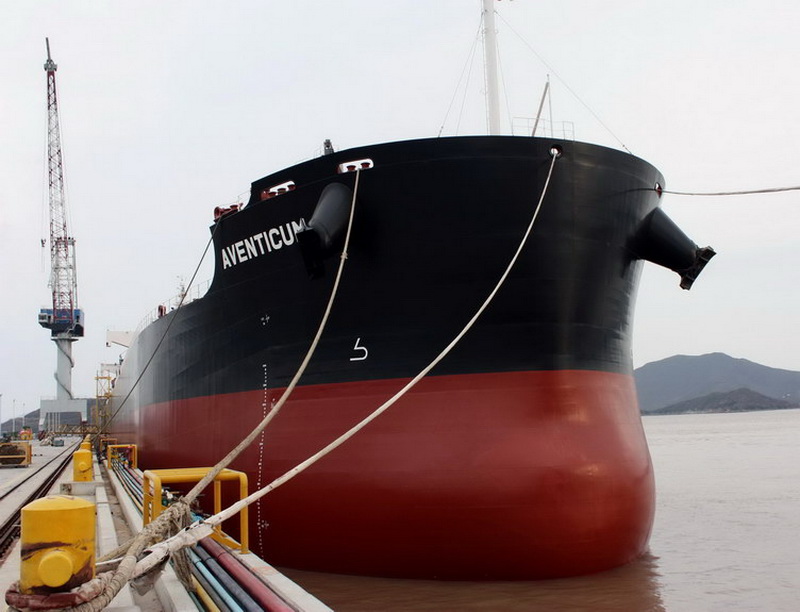
Am 31.03.2010 an der Bauwerft in Zhoushan kurz vor dem auslaufen zur Jungfernfahrt / At the shipyard at Zhoushan prior departing for her maiden voyage
Bildherkunft / Photosource: © Michael Eichmann BWL Bern
|
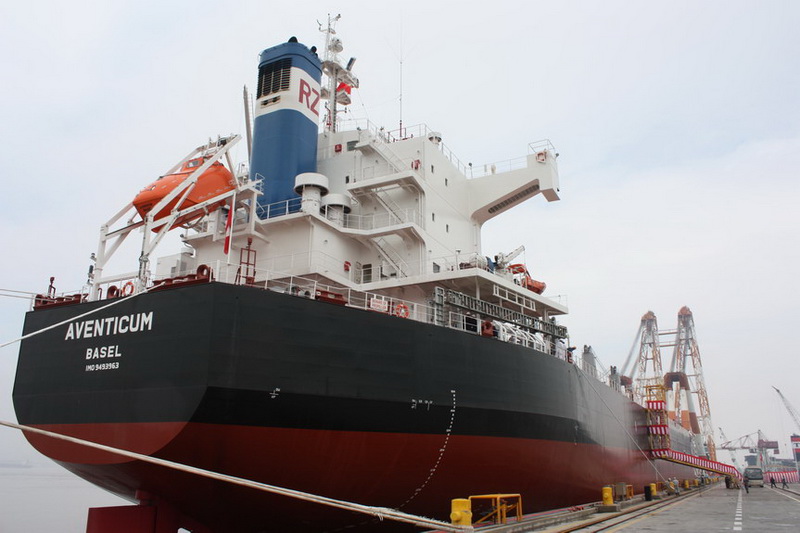
Am 31.03.2010 an der Bauwerft in Zhoushan kurz vor dem auslaufen zur Jungfernfahrt / At the shipyard at Zhoushan prior departing for her maiden voyage
Bildherkunft / Photosource: © Michael Eichmann BWL Bern |
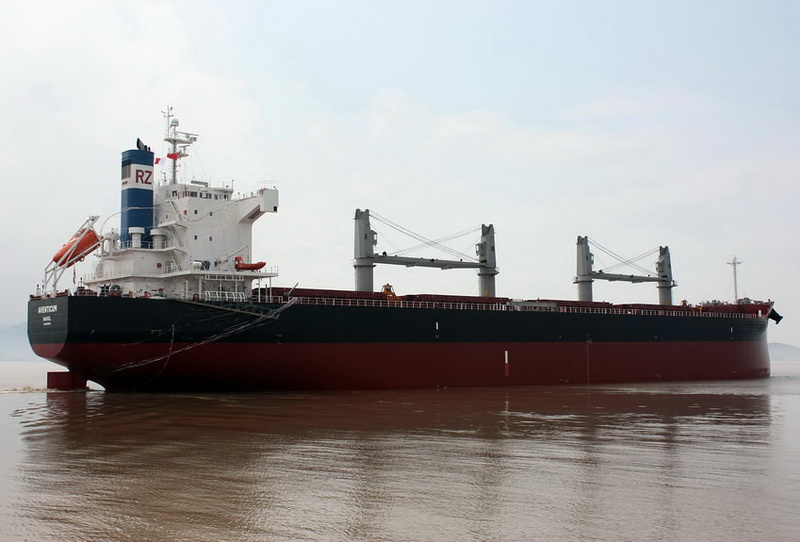
Am 31.03.2010 auslaufend Zhoushan, China zur Jungfernfahrt / Departing Zhoushan March 31, 2010 for her maiden voyage
Bildherkunft / Photosource: © Michael Eichmann BWL Bern |
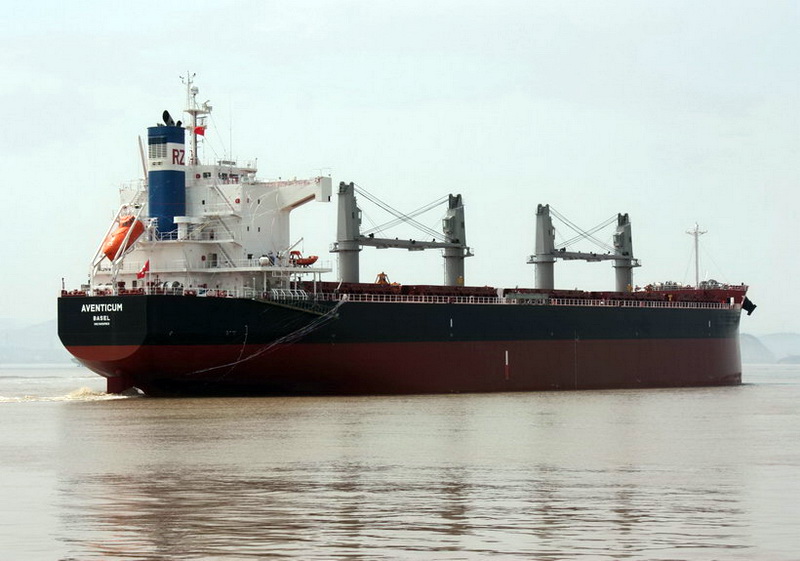
Am 31.03.2010 auslaufend Zhoushan, China zur Jungfernfahrt / Departing Zhoushan March 31, 2010 for her maiden voyage
Bildherkunft / Photosource: © Michael Eichmann BWL Bern |
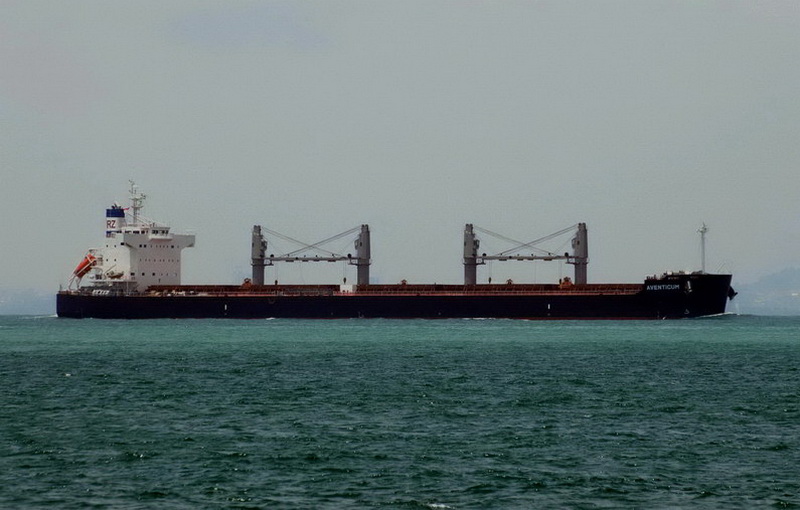
Vor Singapur am 14. April 2010
Bildherkunft / Photosource: © Olaf Schmidt |
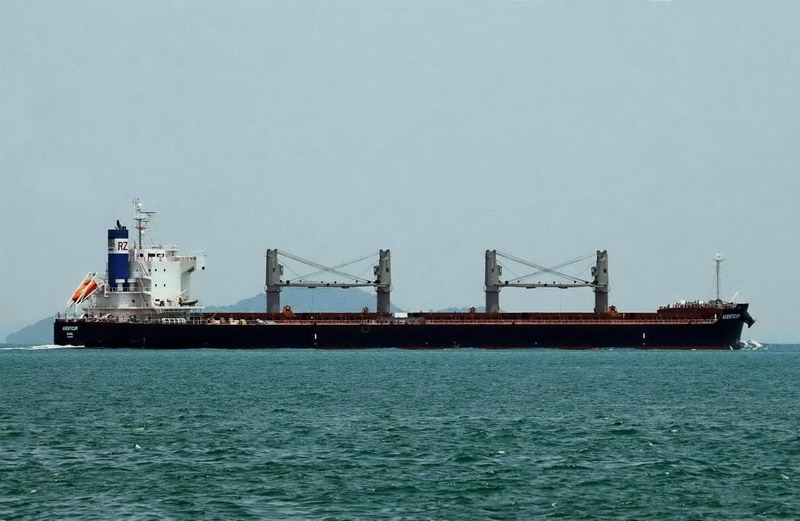
Off Singapore on 14. April 2010
Bildherkunft / Photosource: © Olaf Schmidt |
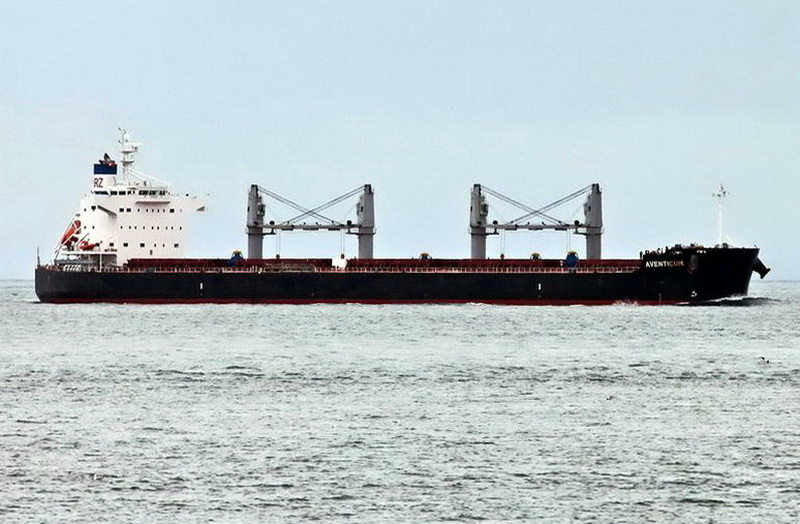
23.05 2012 off Victoria BC, Canada
Bildherkunft / Photosource: © Patrick Lawson |
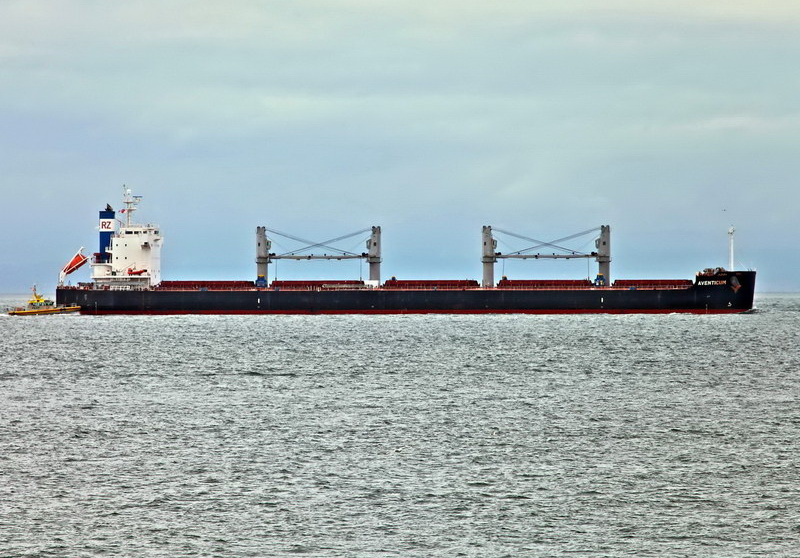
The small boat is the "Pacific Scout", one of the Victoria pilot boats. The boat is picking up the pilot who was on board from Vancouver on 23.05 2012
Bildherkunft / Photosource: © Patrick Lawson |
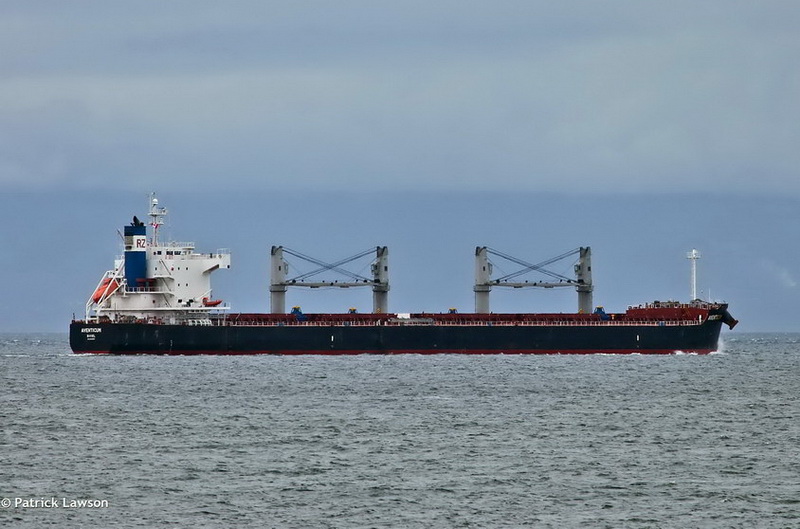
23.05 2012 off Victoria BC, Canada
Bildherkunft / Photosource: © Patrick Lawson |
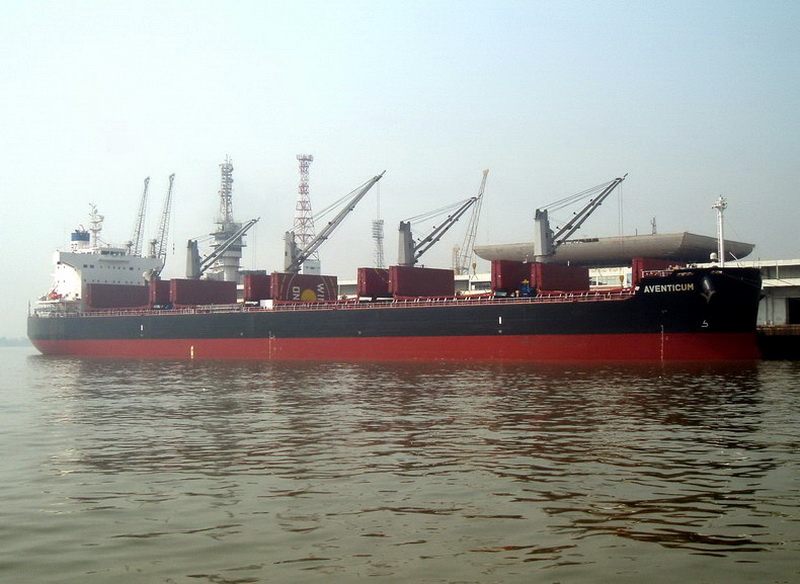
At Mumbai, India on 22.02.2011
Bildherkunft / Photosource: © Alexander Gorter |
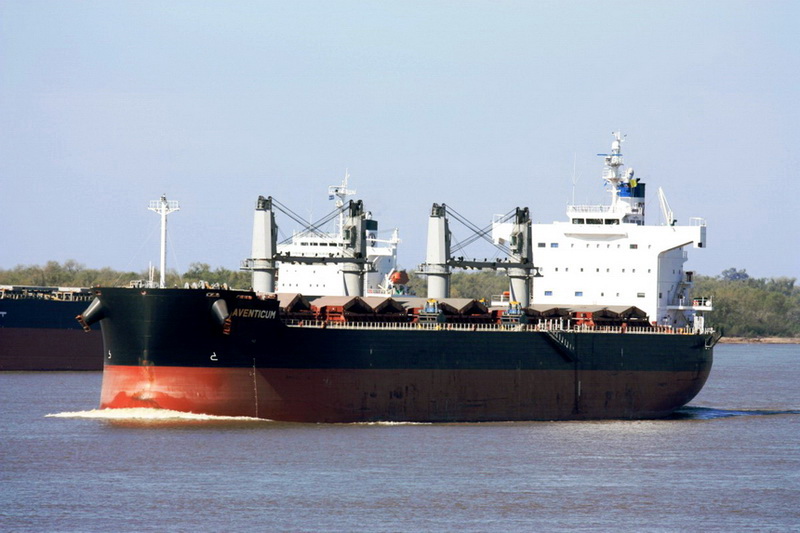
San Lorenzo, Rio Paraná, Argentina 23.07.2011
|
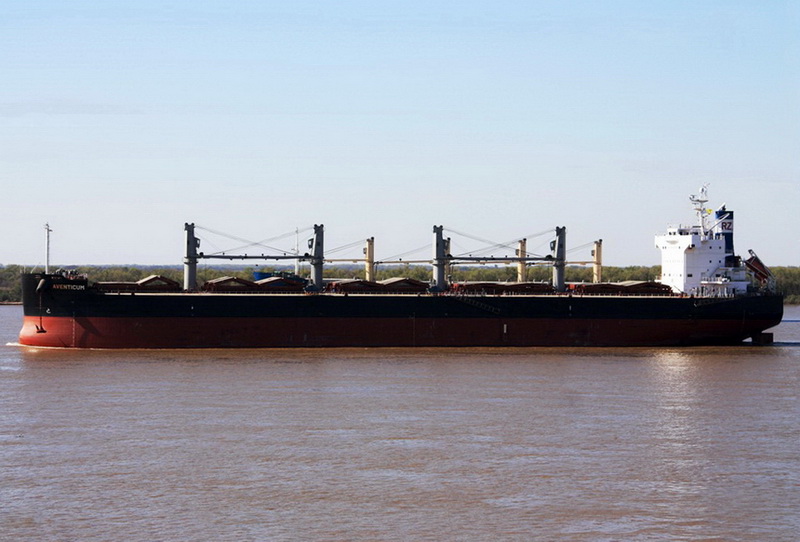
San Lorenzo, Rio Paraná, Argentina 23.07.2011
|
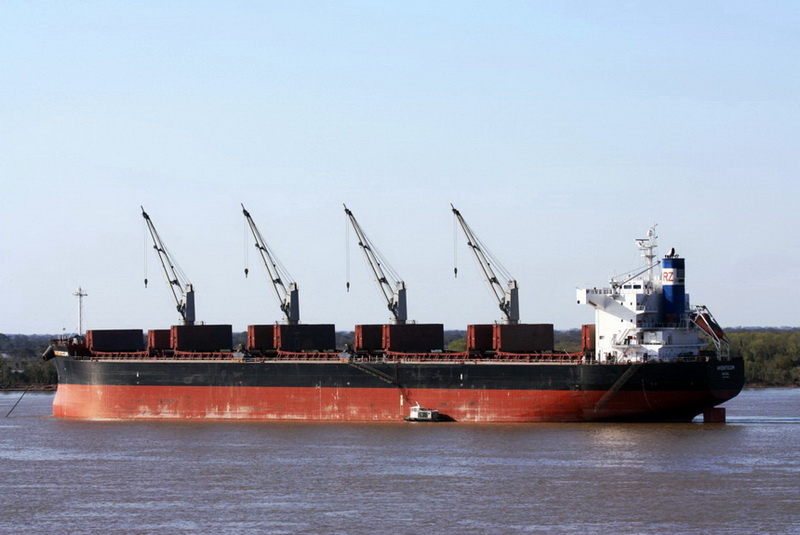
San Lorenzo, Rio Paraná, Argentina 23.07.2011
|
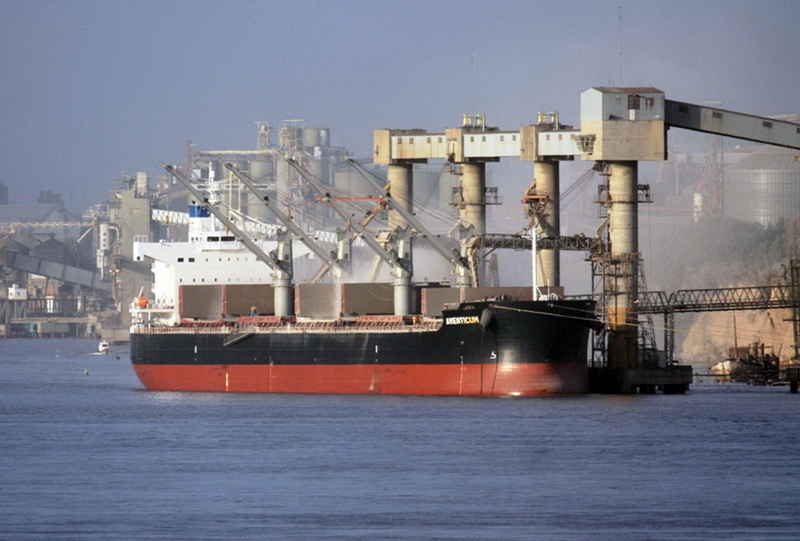
San Lorenzo, Rio Paraná, Argentina 26.07.2011
|
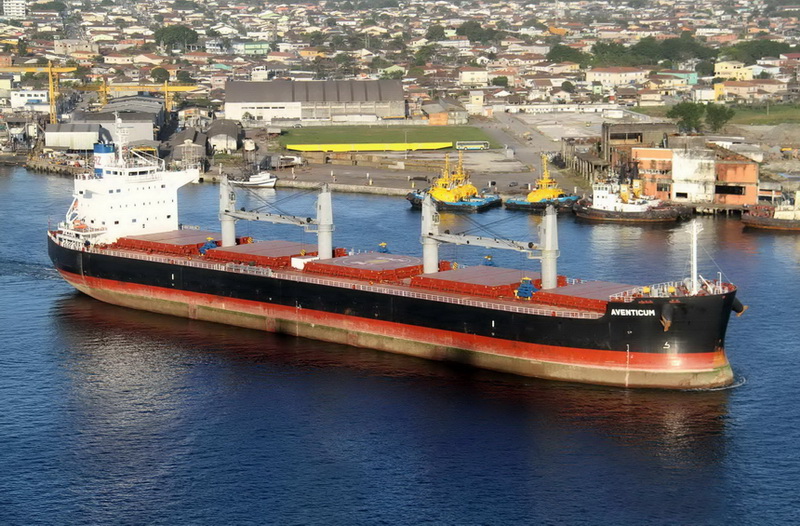
Santos 20.08.2012
Bildherkunft / Photosource: © Roberto Smera |
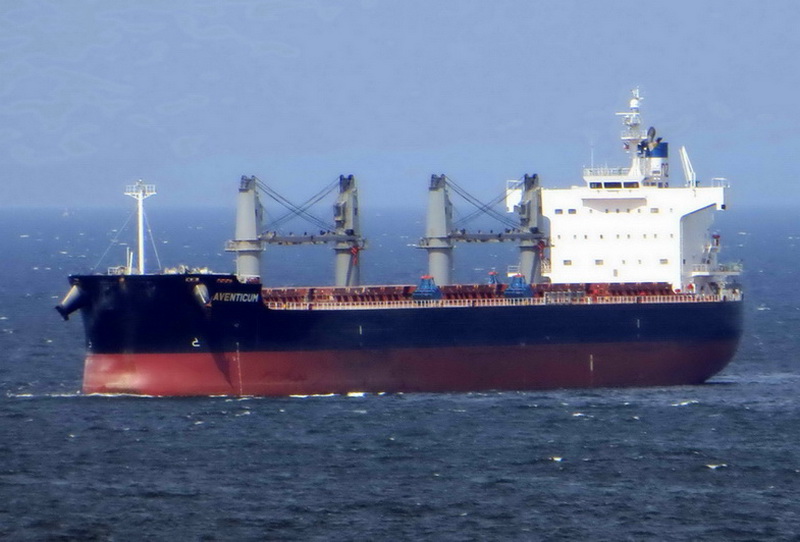
Manila August 9th, 2014
Bildherkunft / Photosource: © Capt. Viktor V. Chernyshov & © Marinetraffic |
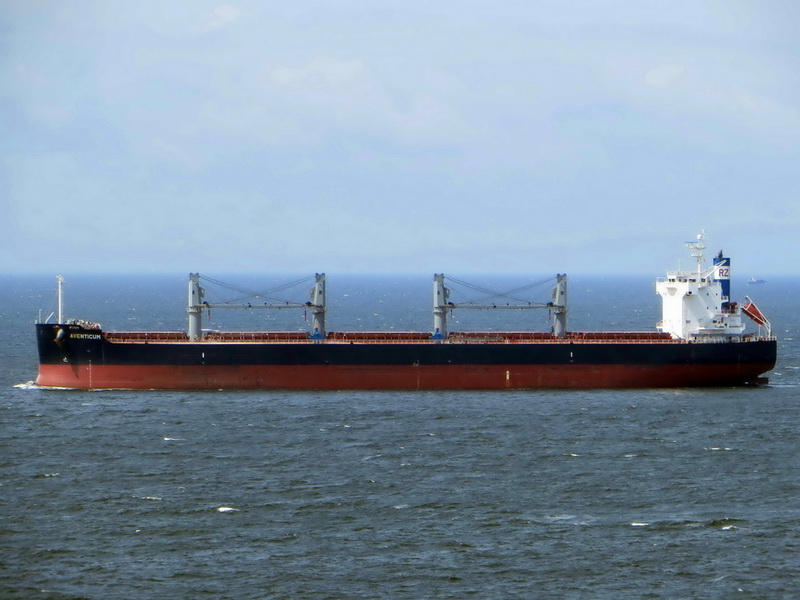
Manila August 9th, 2014
Bildherkunft / Photosource: © Capt. Viktor V. Chernyshov & © Marinetraffic |
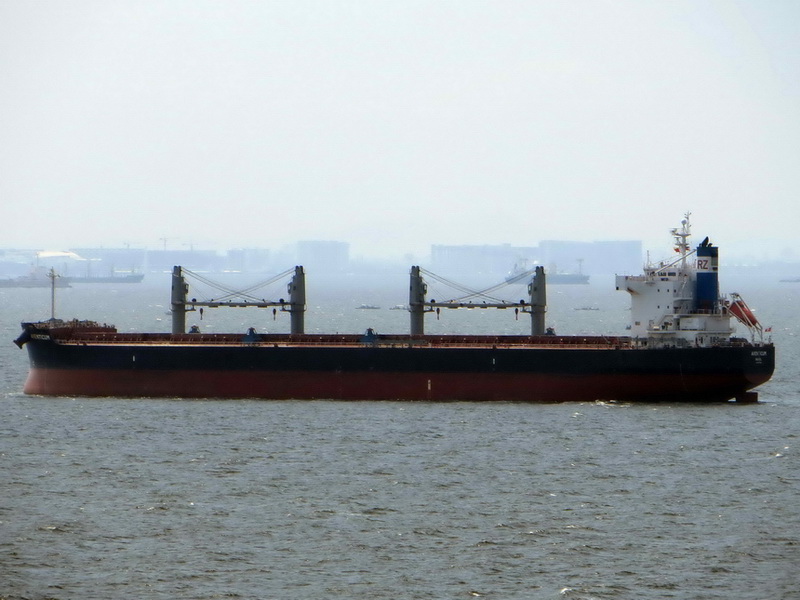
Manila August 9th, 2014
Bildherkunft / Photosource: © Capt. Viktor V. Chernyshov & © Marinetraffic |

Auslaufend Rotterdam am 21.03.2022 nach Gibraltar / Departing Rotterdam on March 21, 2022 for Gibraltar
Bildherkunft / Photosource: © Anton de Krieger
|
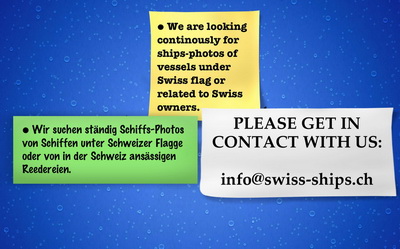
Wir suchen Fotos / Photographs wanted
Bildherkunft / Photosource: © SwissShips / FotoMar
|
|
Diverse Photos
Am 31.03.2010 Decksansicht / Deckview
|
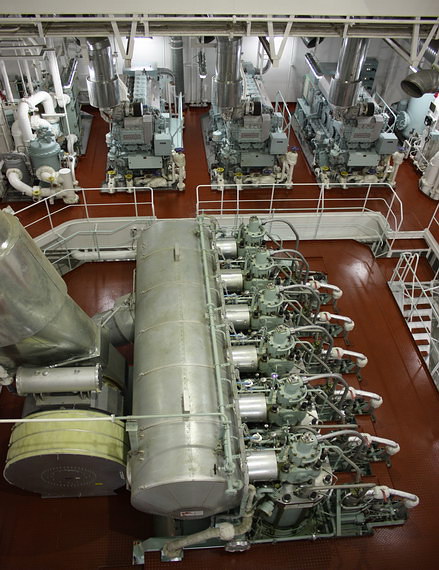
Am 31.03.2010 Zylinderstation der Hauptmaschine (6S50MC-C Mark 7, Mitsui-MAN-B&W) und die 3 Dieselgeneratoren vom Typ Daihatsu
Bildherkunft / Photosource: © Michael Eichmann BWL Bern |
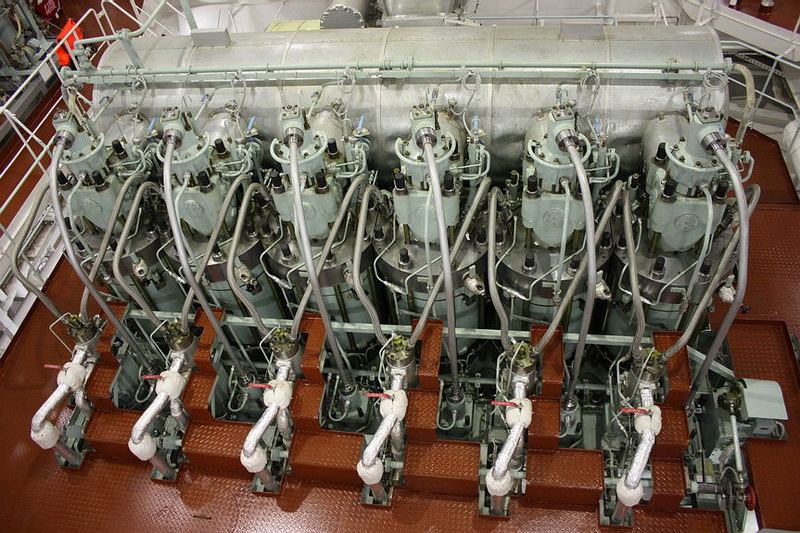
Am 31.03.2010 Zylinderstation der Hauptmaschine (6S50MC-C, Mark 7 von Mitsui-MAN-B&W) / Cylinder top of the main engine
Bildherkunft / Photosource: © Michael Eichmann BWL Bern |
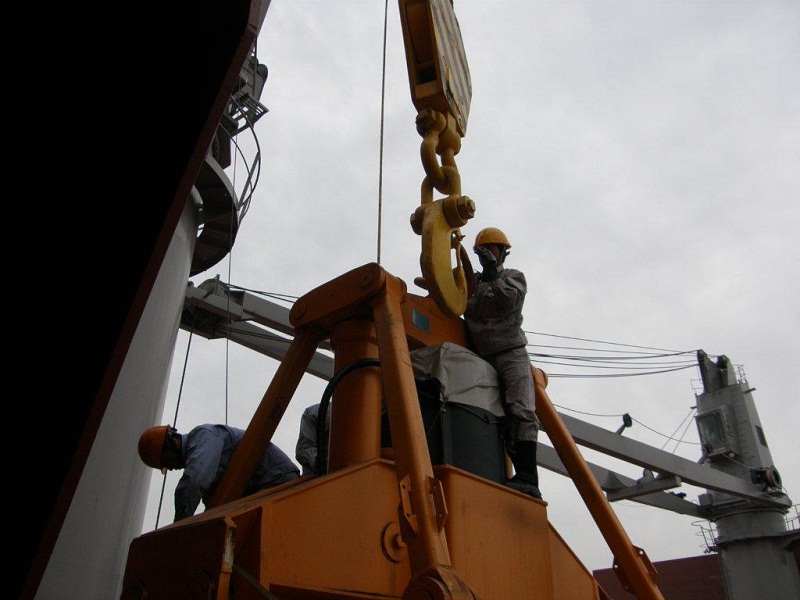
Ein Greifer wird an den Kranhaken gehängt / Hooking up of one of the grabs
Bildherkunft / Photosource: © Reederei Zürich AG Zürich |
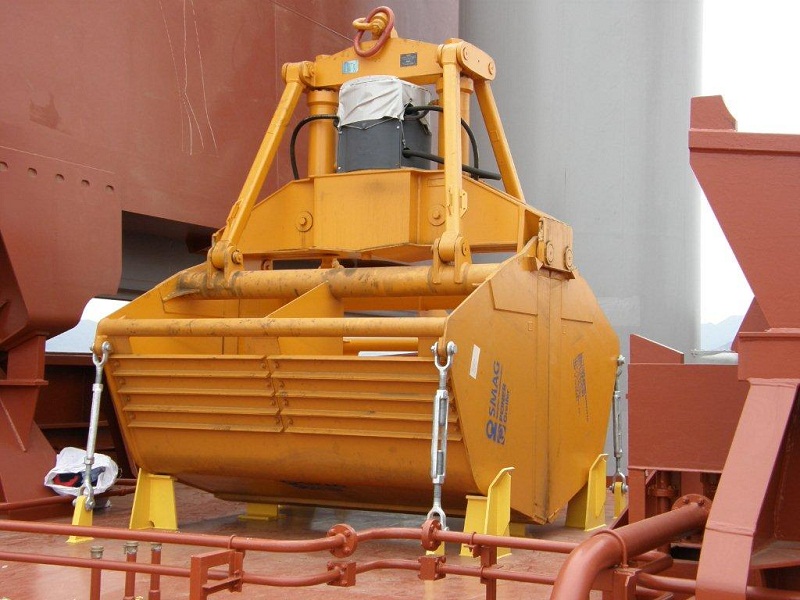
Zu jedem Kran gehört ein Greifer, total sind 4 Greifer an Bord / Each crane has one grab, total 4 grabs are on board
Bildherkunft / Photosource: © Reederei Zürich AG Zürich |
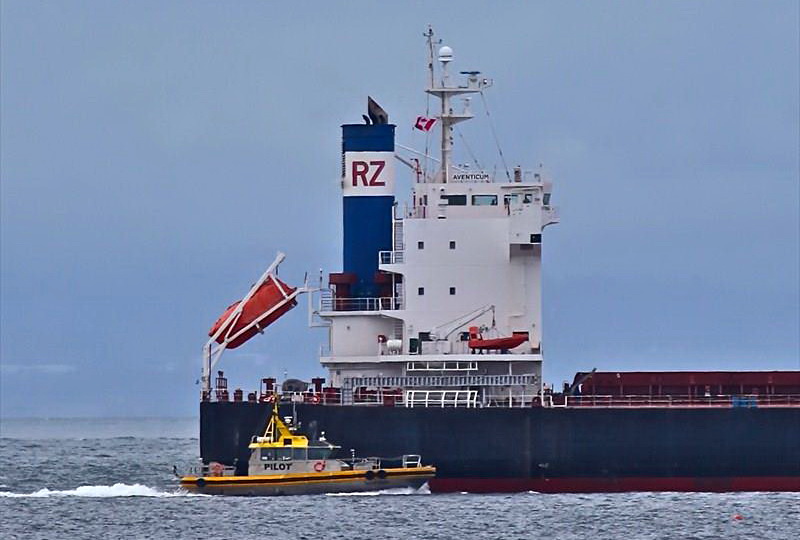
"Pacific Scout", one of the Victoria pilot boats. The boat is picking up the pilot who was on board from Vancouver on 23.05 2012
Bildherkunft / Photosource: © Patrick Lawson |

Wir suchen Fotos / Photographs wanted
Bildherkunft / Photosource: © SwissShips / © FotoMar
|
